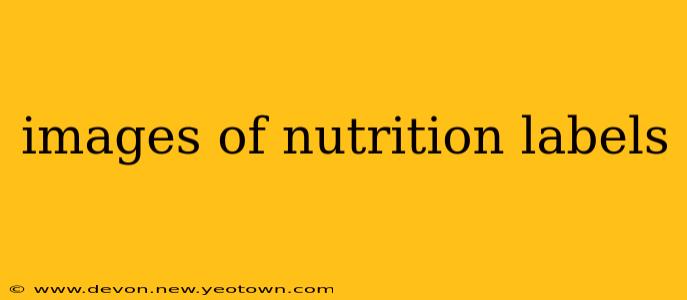Have you ever stared blankly at a nutrition label, feeling utterly overwhelmed by the sea of numbers and percentages? You're not alone. Many of us find nutrition labels confusing, leaving us unsure of what we're actually consuming. But understanding these labels is key to making informed choices about our food and overall health. This journey will take you from intimidated observer to confident label-reader, empowering you to make healthier choices based on solid nutritional understanding.
Let's embark on this adventure together, uncovering the secrets hidden within those seemingly cryptic boxes.
What Information is Found on a Nutrition Label?
The standard nutrition label is a treasure trove of information, designed to provide a snapshot of the nutritional content of a food product. The most important information is often at the top, including the serving size, which dictates the values listed for the other elements. This is crucial, as the nutritional values change depending on how much of the product you consume. It's easy to misinterpret values if you're not paying close attention to this.
Next comes the calories, a measure of the energy the food provides. Below this, you’ll find the breakdown of the macronutrients:
- Total Fat: Including saturated and trans fats, both of which can impact your heart health. Pay close attention to saturated and trans fat levels, as they are usually the ones you want to minimize.
- Cholesterol: Primarily found in animal products, high cholesterol intake can be a concern for some.
- Sodium: Too much sodium can raise blood pressure. Be mindful of sodium levels, especially if you have hypertension or are at risk.
- Total Carbohydrate: Including dietary fiber and sugars. Fiber is crucial for digestive health, while added sugars should be consumed in moderation.
- Protein: Essential for building and repairing tissues.
Finally, there's usually a listing of essential micronutrients, including vitamins and minerals, often expressed as a percentage of the recommended daily intake (%DV).
What are the % Daily Values (%DV) on a Nutrition Label?
This is where things get really interesting. The %DV on a nutrition label shows you what percentage of the recommended daily intake of each nutrient is found in one serving of the product. This is based on a 2,000 calorie diet, a standard reference point. If a product has 20% DV for Vitamin C, it means that one serving provides 20% of the recommended daily intake of Vitamin C for a 2,000-calorie diet. Keep in mind that your individual needs might be higher or lower depending on your age, activity level, and other factors.
How Can I Use Nutrition Labels to Make Healthy Choices?
Armed with the knowledge of what's on a nutrition label, you can start making more informed choices. Prioritize foods with lower levels of saturated and trans fats, sodium, and added sugars. Look for higher percentages of fiber and essential vitamins and minerals. Remember, a balanced diet is key! Don't focus solely on a single nutrient; rather, consider the overall nutritional profile.
Are There Different Types of Nutrition Labels?
While the basic structure remains largely consistent, there might be slight variations depending on the country of origin and specific regulations. For example, some countries may emphasize certain nutrients over others, or may have different requirements for labeling added sugars. Always familiarize yourself with your region’s specific labeling guidelines.
Where Can I Find More Information About Nutrition Labels?
Government health websites and reputable food organizations often provide excellent resources and detailed guides on interpreting nutrition labels. These resources can help clarify any remaining questions and offer additional tips for making informed food choices.
In conclusion, mastering the art of reading nutrition labels is not just about deciphering numbers; it's about empowering yourself to make better decisions for your health and well-being. Next time you pick up a product, take a moment to study the label; the information is there to guide you towards a healthier lifestyle. Happy label-reading!

